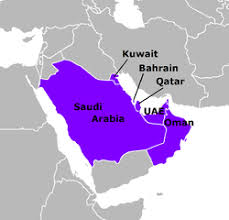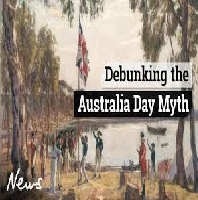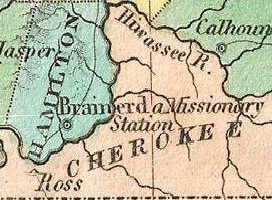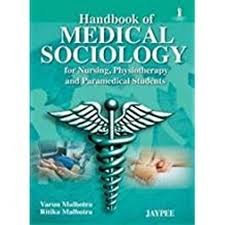
Gulf Cooperation Council
Gulf Cooperation Council
Order Instructions:
Dear Admin,
I am really very disappointment because my last 3 orders was in APA style instead of the HARVARD style. so please inform the writer to write only in Harvard style.
1. Harvard style only.
2. Single space your work.
3. You should have one Aim and two or three objectives and then 4 research questions.
4. Please find the attached files which have been sent by email.
I really need very high quality paper and thank you for your help and cooperation really appreciate.
Thank you,
Amir
In this stage of the Proposal, you will explore how your work fits existing published work, by reviewing literature on your research topic. While gathering sources for your review, keep in mind that your final literature review for the dissertation should represent a thorough understanding of what has already been written about the subject. In addition, consider how your research question derives from the knowledge you have gained from the resources in your review.
Choose three articles from online library resources which are relevant to the subject of your dissertation, and complete a review of these articles. Discuss the key arguments and findings, describing how you think they apply to your topic and specific research questions, plus the potential implications of these findings for your research.
Remember that you must paraphrase the articles in your own words (appropriately referenced, of course) and synthesize their potential contribution to your research; they should not be presented as a ‘list’ of articles.
SAMPLE ANSWER
MBA W3 PROPOSAL ASS
Introduction
GCC is considered as the leading oil producers, an element that has seen the GCC states reluctance in determining appropriate ways of addressing some of the challenges such as climatic changes that inhibit the oil industry. However, it is significant to ascertain that the ever growing consumption of oil products and the changing technologies and infrastructures are driving the need for developing more energy products directed towards meeting the industrial and domestic energy needs.
Aim of Study:
The aim of the proposed research study is to establish the manner in which climate changes the energy policies of the members of the GCC. The study will also be aimed at exploring the impact as well as significance of oil price drops on the Gulf Cooperation Council Arab states.
Research Objectives
- Determine the challenges that member states of the Gulf Cooperation Council come across or face whenever the prices of oil and gas drop.
- Establish appropriate measures that GCC states, organizations, states and individuals can employ in addressing this challenge.
- The research study will also look into the future endeavours and ventures of the GCC countries in creating a sustainable energy system.
Research Questions
In consideration of the above detailed purpose, it is essential to detail that this study will be detailed to determine the significance and impact of oil price drops on GCC countries, governments, companies, and individuals in consideration of the following research question:
- How essential are sustainable energy resources for the oil-rich GCC states that are affected when the prices of oil are lowered?
- What are the challenges that GCC states, companies, governments and individuals face when the prices of oil decline?
- What are some of the viable solutions into this crisis?
- How can these solutions be implemented within the GCC states, organizations, and governments?
Literature Review
According to Morakabati, (2013), the falling of oil prices over the last 12 months is an indicator that the crude oil industry is likely to sink, a factor that is giving the GCC states, individuals, governments and companies an uphill task to ensure their fiscal positions are preserved (pp. 375). The decline in oil prices have also imposed a decline on the revenues of different governments that depend on oil as the backbone of their economies, thus slowing down the economic growth and viability of these economies. Ulrichsen (2012) alleges that the fiscal challenges that arise as a result of this issue vary from state to state with Saudi Arabia considered as the key player in GCC facing the largest fiscal challenge. The primary argument of these authors is directed towards finding a solution towards this challenge (pp.39). The authors of this material therefore purport that the GCC states need to liquidate close to $70billion of foreign reserves including an effort to embark on developing a local debt insurance initiative in addressing this challenge (Arouri, & Rault, pp.243). This material significantly relates to my topic by certainly determining the solution to the research question. The implications of this finding remain significant in detailing efficient approaches that would be employed by GCC states, governments, individuals and organizations in addressing the challenges that rise as a result of the depleting oil prices.
On the other hand, Scherer (2013) addresses the primary research question of this study by establishing a hypothesized result to the question. These authors purport that GCC states, companies, governments and individuals need to initiative efficient intentions directed towards reducing their wide dependency on oil for economic growth. Several GCC states need to resort to liberalization approaches of their financial sectors as one of the fundamental policies that would signal the need to initiate new business ventures through the use of different overseas capital within such economies (pp.42). This would require the initiation of reformative actions that would also ensure comprehensive energy pricing structures are neutrally initiated.
Louis, & Balli (2014) in his material points out to the need for GCC states, organizations, and individuals is supported by the thesis that the trade figures and the financing systems of states has surged the manner in which consumer spend on different products and the business investments made on different economies. However, economist alleges that there is hope since the lower oil prices will be sustained by the decline in rising crude oil prices (pp.26). The author states that the raising export revenues and the budget revenues result from the increases in oil prices.
However, the GCC states, companies, and individuals need to scale up the process of diversification. This requires a heavy spending on fuel for private consumption and the construction industry (Hakro, & Omezzine, 2016, pp.15). On the other hand, states need to integrate the energy sector by raising the productivity within the tourism, construction, real estate, mining, transport, and retail sector with the aim of diversifying the economies of these states in order to depend on several sources of revenue rather than oil. This material remains essential in supporting this thesis since its implications clearly provides a solution into this crisis.
As detailed by these authors, it is essential to indicate that the sharp decline in oil prices indicates the significance of economic diversification in addressing the decline in oil prices that affects different economies, organizations and individuals. As a result of this, it is advisable that GCC states, organizations, individuals and governments need to promote non-oil trade with the aim of supporting a sustainable economic growth (Jaffe, & Elass, 2015, pp, 129). This is attributed to the fact that this implication of this research is directed towards the initiation of a more resilient economy that fundamentally receives immense benefits from a strong macroeconomic growth that result from solid financial duffers, diversification and the integration of these economies with world trade. This requires the development of service and manufacturing industries within these economies, an element that will result in the development of a less dependent oil economy.
Conclusion
As detailed in this literature review, it is imperative to ascertain that the falling oil prices has resulted into economic challenges for several economies within the GCC framework, an element that has given these states, individuals, companies and governments a task of addressing this challenge. However, the research indicates the need for economic diversification as the primary key directed towards addressing the decline in oil prices that has negatively impacted several GCC economies, individuals, governments and states.
References
Arouri, M. H., & Rault, C. 2012. ‘Oil Prices and Stock Markets in GCC Countries: Empirical Evidence From Panel Analysis. International Journal of Finance & Economics, 17(3), 242-253. doi:10.1002/ijfe.443
Hakro, A, & Omezzine, A 2016, ‘Oil Prices And Macroeconomic Dynamics Of The Oman Economy’, Journal Of Developing Areas, 50, 1, pp. 1-27, Business Source Complete, EBSCOhost, viewed 13 June 2016.
Jaffe, A, & Elass, J 2015, ‘War And The Oil Price Cycle’, Journal Of International Affairs, 69, 1, pp. 121-137, Business Source Complete, EBSCOhost, viewed 13 June 2016.
Louis, R, & Balli, F 2014, ‘Oil Price and Stock Market Synchronization in Gulf Cooperation Council Countries’, Emerging Markets Finance & Trade, 50, 1, pp. 22-51, Business Source Complete, EBSCOhost, viewed 13 June 2016.
Morakabati, Y 2013, ‘Tourism in the Middle East: Conflicts, Crises and Economic Diversification, Some Critical Issues’, International Journal Of Tourism Research, 15, 4, pp. 375-387, Hospitality & Tourism Complete, EBSCOhost, viewed 13 June 2016.
Scherer, B 2013, ‘Macroeconomic Risk Management For Oil Stabilization Funds In Gcc Countries’, Bankers, Markets & Investors, 109, pp. 36-45, Business Source Complete, EBSCOhost, viewed 13 June 2016.
Ulrichsen, KC 2012, ‘Internal and External Security in the Arab Gulf States’, Middle East Policy, 16, 2, pp. 39-58, Academic Search Premier, EBSCOhost, viewed 13 June 2016.
We can write this or a similar paper for you! Simply fill the order form!












